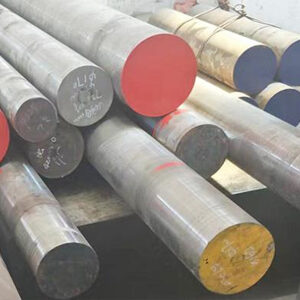Selecting the right hot work tool steel alloy for specific applications is a critical decision that impacts performance, efficiency, and longevity. Hot work tool steels are renowned for their ability to withstand high temperatures, but the choice of alloy and its properties must align with the demands of the task at hand. In this in-depth guide, we will explore the intricacies of hot work tool steel selection, providing insights into alloy properties, common applications, and expert recommendations.
1. Introduction to Χάλυβας εργαλείων θερμής εργασίας Selection
1.1 The Crucial Role of Material Selection
Choosing the right hot work tool steel alloy is paramount in industries where extreme temperatures and mechanical stress are commonplace. Material selection directly influences tool performance, durability, and overall efficiency.
1.2 Factors Influencing Alloy Choice
Numerous factors, including operating temperatures, mechanical loads, material compatibility, and cost considerations, influence the choice of hot work tool steel alloys. A thorough understanding of these factors is essential for informed decision-making.
2. Properties of Χάλυβας εργαλείων θερμής εργασίας Alloys
2.1 Heat Resistance
Heat resistance is a fundamental property of hot work tool steel alloys, allowing them to maintain their structural integrity in high-temperature environments.
2.2 Wear Resistance
Wear resistance is crucial in applications subject to friction, abrasion, and wear. Proper alloy selection ensures the longevity of tooling.
2.3 Toughness
Toughness measures a material’s ability to absorb energy without fracturing. It is vital for withstanding mechanical shocks and impacts in high-temperature processes.
2.4 Dimensional Stability
Dimensional stability ensures that tooling retains its shape and size even under extreme thermal conditions, critical for maintaining precision.
3. Common Hot Work Tool Steel Alloys
3.1 H13
H13 is a versatile and widely used hot work tool steel known for its excellent combination of heat resistance, toughness, and wear resistance. It finds applications in forging, die casting, and extrusion.
3.2 H11
H11 is valued for its exceptional thermal fatigue resistance and is often selected for high-temperature applications involving cyclic heating and cooling. It is commonly used in die casting and extrusion.
3.3 H21
H21 is favored for its high-temperature strength and dimensional stability. It is a preferred choice for applications requiring minimal thermal expansion, such as high-temperature molds.
3.4 H19
H19 offers excellent heat resistance and wear resistance. It is suitable for applications like high-temperature machining, where tooling must endure extreme temperatures and wear.
4. Applications and Matching Alloys
4.1 Die Casting
Die casting operations often rely on H11 or H13 due to their robust heat resistance and wear resistance, crucial in maintaining die life and product quality.
4.2 Forging
Forging processes benefit from the toughness and wear resistance of H13, which can withstand the mechanical stresses and high temperatures involved.
4.3 Extrusion
Extrusion tooling often incorporates H21, appreciated for its dimensional stability, ensuring precise shaping of materials at elevated temperatures.
4.4 High-Temperature Machining
In high-temperature machining, H19’s heat resistance and wear resistance make it a suitable choice for cutting, shaping, and forming materials at extreme temperatures.
5. Expert Recommendations for Selection
5.1 Understanding Application Requirements
Thoroughly assess the specific requirements of your application, including operating temperatures, mechanical loads, and material compatibility.
5.2 Consulting Material Data Sheets
Material data sheets provide valuable information on alloy properties, helping you make informed decisions based on technical specifications.
5.3 Considering Cost and Availability
Consider budget constraints and the availability of specific alloys when making your selection, balancing performance with practicality.
5.4 Collaborating with Suppliers
Consulting with reputable suppliers and manufacturers can provide valuable insights and recommendations tailored to your needs.
6. Challenges and Common Pitfalls
6.1 Overlooking Compatibility
Neglecting material compatibility with the processed materials can lead to premature wear and reduced tool life.
6.2 Neglecting Heat Treatment
Proper heat treatment processes are essential to optimize alloy properties and ensure long-term performance.
6.3 Failing to Assess Long-Term Needs
Consider the longevity of tooling and potential changes in application requirements when selecting hot work tool steel alloys.
7. FAQ: Addressing Common Questions
7.1 How do I determine the appropriate hot work tool steel alloy for my application?
Selecting the right alloy requires a thorough assessment of application requirements, including temperature, mechanical stress, and wear resistance.
7.2 Are there general guidelines for selecting alloys based on temperature requirements?
While there are guidelines, alloy selection should consider a combination of factors beyond just temperature, including wear, toughness, and material compatibility.
7.3 Can one alloy be versatile enough to cover multiple high-temperature applications?
Some alloys, such as H13, offer versatility but may not be ideal for all applications. Customization may be necessary for specialized needs.
7.4 What is the role of alloy composition in material selection?
Alloy composition determines the properties of hot work tool steel, influencing heat resistance, wear resistance, toughness, and other critical characteristics.

